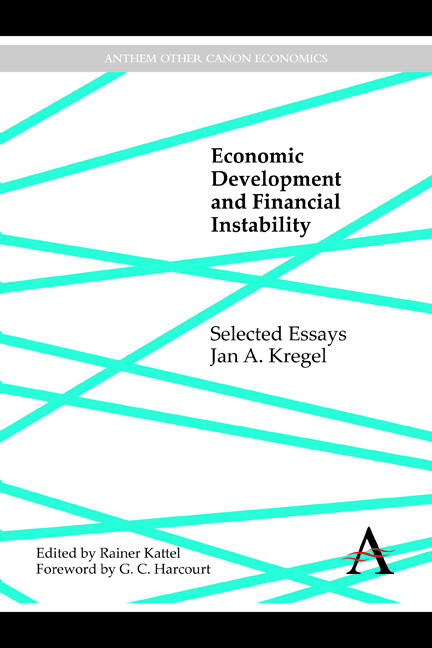Book contents
- Frontmatter
- Contents
- Foreword
- Publication History
- I Theoretical Discussions
- II Finance for Development
- 9 East Asia Is Not Mexico: The Difference between Balance of Payments Crises and Debt Deflations
- 10 Yes, “IT” Happened Again: The Minsky Crisis in Asia
- 11 Financial Liberalization and Domestic Policy Space: Theory and Practice with Reference to Latin America
- 12 Derivatives and Global Capital Flows: Applications to Asia
- 13 Was There an Alternative to the Brazilian Crisis?
- 14 An Alternative View of the Argentine Crisis: Structural Flaws in Structural Adjustment Policy
- 15 The Discrete Charm of the Washington Consensus
- III The Crisis in the US and the EU
- Index
11 - Financial Liberalization and Domestic Policy Space: Theory and Practice with Reference to Latin America
from II - Finance for Development
Published online by Cambridge University Press: 05 November 2014
- Frontmatter
- Contents
- Foreword
- Publication History
- I Theoretical Discussions
- II Finance for Development
- 9 East Asia Is Not Mexico: The Difference between Balance of Payments Crises and Debt Deflations
- 10 Yes, “IT” Happened Again: The Minsky Crisis in Asia
- 11 Financial Liberalization and Domestic Policy Space: Theory and Practice with Reference to Latin America
- 12 Derivatives and Global Capital Flows: Applications to Asia
- 13 Was There an Alternative to the Brazilian Crisis?
- 14 An Alternative View of the Argentine Crisis: Structural Flaws in Structural Adjustment Policy
- 15 The Discrete Charm of the Washington Consensus
- III The Crisis in the US and the EU
- Index
Summary
1. Introduction
Although they were not included in the original policy proposals of the Washington Consensus, opening domestic capital markets to foreign capital inflows and deregulation of domestic capital markets have been a crucial element of structural adjustment policies practised by Latin American developing countries and as part of the conditionality attached to IMF and World Bank lending programmes starting in the 1970s. Support for these measures comes from a straightforward application of the neoclassical approach to efficient distribution of economic resources on a global level. This position still dominates the thinking of multilateral institutions, despite the fact that it is based on a faulty theoretical justification, as demonstrated by the 1960s Cambridge Controversies in the theory of capital.
Even before the theoretical debates in capital theory, Keynes had criticized similar policies in the 1930s. He reached the conclusion that such policies would eliminate what is now called a country's domestic ‘policy space’, that is, its ability to pursue domestic economic policies directed at maximizing output and employment.
This chapter will present and assess the traditional explanation and justification of opening domestic capital markets to improve domestic growth conditions, and outline the criticism based on the Cambridge Capital debates. It will also present Keynes's analysis of similar proposals in the 1930s, presenting his argument that such policies eliminate domestic ‘policy space’.
- Type
- Chapter
- Information
- Economic Development and Financial InstabilitySelected Essays, pp. 167 - 180Publisher: Anthem PressPrint publication year: 2014



